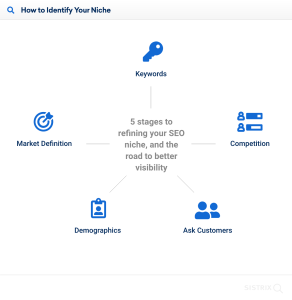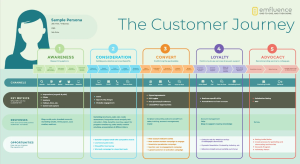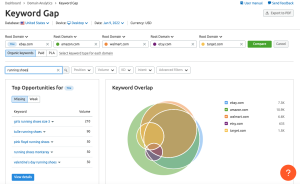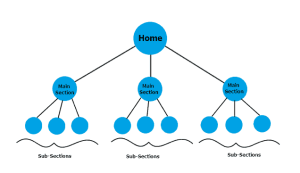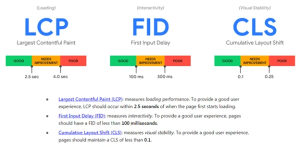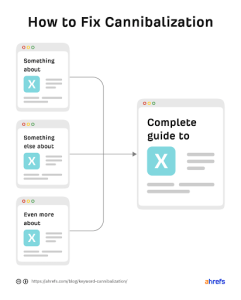Search engine optimization (SEO) is an important consideration for any business these days, especially businesses operating in the B2B space. SEO isn’t just about making sure your website has the right keywords and tags; it’s also about understanding the type of audience you’re targeting and ensuring they have equal access to your product or service. In this article, we’ll explore the importance of having a B2B SEO Strategy and how it can help you stay ahead of your competition.
B2B SEO Strategy
SEO remains one of the most effective methods for reaching out to the right audiences online in the B2B space. Here are some reasons why:
Targeted Reach – With proper keyword research and content optimization, businesses can target specific customer segments who are likely to be interested in their products or services. This way your B2B company will be able to connect with qualified prospects more easily than other forms of advertising.
Better Visibility – Rankings in the SERPs can have a huge effect on how well a company performs online; hence, having better visibility means better leads and conversions for any given business. Optimizing your website with relevant keywords helps draw more traffic from organic sources rather than relying too much on paid advertisements.
Build Credibility – Higher rankings also indicate branding credibility which goes hand-in-hand with trustworthiness; customers tend to rely greatly on trustworthy brands while making purchasing decisions or choosing services they’re interested in availing of.
Difference Between B2B and B2C SEO
The most fundamental difference between B2B and B2C businesses when it comes to SEO is the target audience. Businesses that sell directly to consumers are usually targeting a wide range of potential customers. On the other hand, B2B companies tend to focus their efforts more narrowly on certain markets and decision makers within those markets.
Another key difference is B2C content should generally be more direct in nature while also taking into account emotional triggers that can lead customers to make decisions about purchasing products or services. On the other hand, marketing content for a B2B audience should typically be more comprehensive in nature as decision makers will require deeper insights into the product or service being offered before making any kind of commitment.
The 5 Step B2B SEO Strategy
B2B SEO entails many complex dynamics, so we have developed a 5 step framework to structure the concepts and simplify the strategic understanding.
Step 01: Research
Research plays an important role before starting out on any SEO journey or campaign. It is a crucial step in understanding how competitors are performing, what keywords people are using to search for your product or website, what kind of content they’re looking for, and more. Furthermore, research can also be used to identify any opportunities or threats in your industry so that you can stay one step ahead. Following are the activities you should undertake when starting with research:
Understand Your Niche
One of the most important steps when studying a niche for B2B SEO is to understand who exactly makes up that niche. To do this, you will need to conduct some research into the characteristics and needs of your target market. The more narrow your niche, the easier it will be to create content that resonates with this audience and leads them towards conversion.
Source: Sistrix
Identify Buyer Personas & User Journeys
After conducting research on your target market it’s time to identify buyer personas. A buyer persona goes beyond demographics such as age or gender; it also looks at factors like behaviors and motivations related to purchasing decisions. You can use data points such as job titles, preferred information sources, values or opinions about certain topics as well as interests or hobbies that can inform these personas.
Source: CRM Software Blog
Segment Keywords to Target Buyers At Different Stages Of Your Funnel
The first step in keyword segmentation is understanding what type of content should be associated with each stage of the funnel – from educational content at the top of the funnel (TOFU), to product-focused initiatives further down towards the bottom of the funnel (BOFU). Once you’ve identified how prospects are moving through your funnel, it’s time to perform keyword research and select appropriate keywords for each stage.
Source: Advanced Web Ranking
Conduct Competitor Analysis
The first step in performing competitor analysis for SEO is to not only identify your business competitors, but also your search engine results pages (SERPs) competitors. You should look at who and what SERPs are ranking for terms you want to rank for as well. It’s worth exploring all of the top 10 results for each SERP result page, not just the top 3, as sometimes a deep dive can provide unexpected insights.
Next, content should always play an important role when assessing other businesses competing within your space. Look at not only what kind and depth of content they are producing, but also observe whether their content features calls-to-action that incentivizes people for taking certain steps – such as signing up for an information kit or newsletter subscription – which suggests great emphasis being placed into building relationships with possible leads through direct contact info capture requests via content consumption methods.
Conduct a Gap Analysis
Before performing any kind of gap analysis, make sure to list out at least 2-3 competitors who have better search engine rankings than your site. Once you have identified your primary search engine competitors, the next step is to collect keywords from their websites. To begin the analysis process, create two lists: one with the relevant terms found on competitor sites; the second with terms found on yours. Now compare these two lists and identify any gaps – i.e., keywords or topics which appear in one list but not the other – to determine where competitive opportunities might lie. This will help you discover additional keywords which you may have missed during your primary keyword research.
Source: Semrush
Use the Right Research Tools
The right research tools enable you to reverse engineer successful campaigns by taking a peek at the backlinks and keyword targets of your strongest digital competitors. You can also keep track of any changes they make over time, which will give you insight into what strategies are helping them gain ground in search rankings. Popular tools like SEMRush, Ahrefs, & SpyFu are extremely useful for performing this kind of research. Tools like Ubersuggest & AnswerThePublic are also useful for gaining additional keyword level data that you may not find from google keyword planner.
Step 02: Audit Your Website
After your initial research is done, website audit is an essential component of a comprehensive search engine optimization strategy. By performing a thorough audit of your website, you can uncover potential issues that could otherwise go unnoticed and eventually lead to larger issues in the future like negatively impacting your rankings, traffic and overall performance. Following are the list of things you should consider when auditing your website
Website Structure:
It focuses on optimizing site structure and internal link architecture to ensure search engines can crawl and index content within your website more efficiently.
Source: CrazyLeaf Design
URL Analysis:
This process allows you to identify errors and bad practices in the URLs of a website, and to suggest improvements that will help them rank higher in SERPs. By implementing redirects, rewriting URLs according to best practices, removing unnecessary parameters and implementing other improvements, you can make sure that search engine bots are crawling your website efficiently and effectively, thus improving rankings and driving more organic traffic.
Sitemap Audit:
An audit of the sitemap ensures that all important pages and images are properly set up for indexing – this will ensure it is much easier for search engines like Google to crawl and understand what each page contains.
Google Core Web Vitals:
Google Core Web Vitals are a set of metrics that measure user experience on web pages and are used as a ranking factor in search engines. These core vitals cover page loading performance, interactivity, visual stability, and certain other aspects of the user experience. By understanding the importance of these metrics, websites can tailor their pages for maximum performance and ensure better rankings in Google’s organic search results. Properly optimizing for these core factors can also lead to improved user engagement on websites and therefore increased conversions.
Source: BrightEdge
Backlink audit:
Conducting a backlink audit is an important measure to assess the current state of your website. By auditing the existing links, it is possible to identify any potential problems such as spammy or low-quality links that can negatively impact your ranking and visibility in search engine results pages (SERPs). This process helps to ensure that any new efforts in SEO are proposed off a good foundation, instead of making matters worse by carrying over historical problems from the past. A backlink audit also helps you identify broken links and thereby enables you to make necessary improvements to strengthen your website.
After conducting the website audit and research that’ll give you insight about your website’s performance and what needs to be improved, now it’s time to start optimizing your website.
Step 03: Optimization
Without proper optimization of content after really delving into research about separate web pages or entire websites, you may miss out on valuable opportunities to land in the top rankings of SERPs. With SEO optimization, you can ensure that each page of the website contains rich, quality content optimized for search engines. The things to be undertaken for the optimization phase are listed below:
Optimize Metadata:
Optimizing page meta data for SEO is a primary aspect of website optimization. This includes the title tags, meta descriptions, canonical tags, h1 tags, image alt-tags and other meta tags. Title tags are used to describe what the page is about and should be kept descriptive yet concise. Meta descriptions are used to provide brief summaries of the page content which should be styled in a way that people are compelled to click it. H1 tags are your most important headings for the page content. Canonical tags help search engines understand which version of a given URL is authoritative and should be used as the source for ranking signals and alt-tags can result in better accessibility and rankings due to images being crawled by search engine bots. All these when implemented correctly can help improve website visibility on SERPs.
Avoid Keyword Cannibalization:
Keyword cannibalization is a major problem that many SEO professionals face. It describes the situation where two or more pages of a website are competing for the same keyword on search engine result pages. This leads to unnecessary competition between your own webpages which can greatly reduce their effectiveness in achieving organic growth through search engines. As such, it is important to avoid keyword cannibalization to ensure that each page of your website focuses on an individual keyword and is able to effectively rank for that target term.
Source: Ahrefs
Avoid Keyword Stuffing:
Not only will keyword stuffing have a negative effect on your rankings, it can also harm your website’s user experience and drive visitors away from your page. Focus on writing natural sounding content that targets keyword phrases in a logical manner. Concentrate on providing high-quality content which will keep viewers engaged and ultimately result in improved search engine rankings. With this approach, you’ll be able to make the most out of your SEO efforts while ensuring visitors are happy with your page.
Source: SE Ranking
Improve Semantic Relevance of Content:
Increasing the semantic relevance of content is a cornerstone of a successful search engine optimization strategy. This means that keywords, meta tags, and other elements must be carefully chosen to ensure that search engines can detect them so they are associated with particular search queries. Semantic relevance also means that related topics should be addressed in the text to make sure there are meaningful connections between different words and phrases in the content. Doing so creates a deeper understanding of the topic for both readers and search engines, which gives websites an edge when it comes to ranking their contents on SERPs.
Step 04: Amplify
With on-page SEO complete, it is now time to turn your attention to amplification activities like link building, content marketing, and social media interaction. By putting together an effective mix of strategic digital marketing activities such as the above, businesses will be able to amplify their SEO efforts and gain more organic traffic from Google’s search engine results pages. Following are the things that will help you amplify your SEO efforts:
Create a Credible B2B Blog
For B2B businesses, blogging is one of the most powerful SEO weapons as there are tremendous opportunities in the awareness stage of keywords. Quality, engaging and credible blog content helps you create a reputation of being an authority and an expert in your niche. Not only does relevant content draw organic traffic from search engines, but it also encourages readers to stay longer on your site, converting them into potential customers. Furthermore, creating quality content for an extensive period allows you to continuously reach new audiences and cross-promote posts across different social networks. A credible B2B blog can do wonders for a B2B business’s SEO as well as brand credibility.
Try Publishing Primary Research Data
Publishing primary research data is one of the best ways to generate high quality backlinks. By making your research data publicly available, you can build relationships with other researchers, spark conversations and help others to use and build upon it. For e.g. if you are a SaaS company that caters to different industries, you can use your backend data to publish reports on the user behavior/trends of different industries. This provides a much bigger boost than having a lot of low-quality backlinks from irrelevant websites.
Focus on Quality Link Building
Quality always trumps quantity when it comes to SEO so make sure you are focusing on getting links from reliable, authoritative sources like industry websites, niche blogs or even major news outlets. Focusing on getting a smaller number of quality backlinks can help your page considerably improve its ranking position without needing to reach for large numbers of low-quality links.
Step 05: Maintenance
It’s quite common that some common maintenance tasks need to be carried out regularly in order for the website to perform at an optimal level. This is especially true with SEO, as it’s important to track, monitor and adjust content, keywords, backlinks and other elements on a frequent basis in order to ensure ongoing visibility and competitiveness. Repetitive maintenance activities include:
Monitor Google Search Console Regularly
Checking your Google Search Console provides important data that can help you optimize your site for higher rankings and better discoverability. With it, you can measure SEO performance, get indexation status, receive warning alerts related to issues on your site, submit URLs for crawling and optimization, investigate mobile usability problems and much more. With this valuable data in hand, you have powerful tools to make smart decisions about content optimization and technical improvements for organic growth.
Disavow Toxic Backlinks
Disavowing backlinks is a vital part of maintaining a healthy backlink profile. This simple activity can help minimize the impact that malicious or outdated links have on your SEO, as well as prevent any manual action being taken against you by Google. Disavowing can be done by creating a document listing all questionable links, and submitting it to Google Webmaster Tools so that they can adjust their algorithm accordingly and consider only authoritative sources while evaluating your website’s health. Tools like SEMrush help you monitor and evaluate your link profile with a spam score dashboard for your website and details of toxic links that need immediate attention.
Build Internal Links
Internal links help guide users through related topics and even provide context clues to improve understanding of a particular topic. When publishing a new blog, try to connect technical words with existing blogs so users can understand concepts better. This also decreases the bounce rate by keeping visitors engaged and interacting with other pages of your website. However, make sure to place internal links only where it seems important as overdoing internal links hampers the user experience and also leads to google seeing the website as spam.
Keep a Look at Competitor Keywords
It is important to check what keywords your competitors have been adding and performing well to ensure you don’t leave a gap for them to leverage. Depending on how quickly your industry innovates/grows, you can perform a competitor analysis every 6-12 months and plan your next set of keywords accordingly to keep at pace.
Best Practices for B2B SEO Content
Increase your Value Quotient
Writing in-depth and well researched content on blog pages or articles is one way of providing value, but there are several other ways, such as use of infographics, images, videos and calculators; linking to whitepapers or eBooks could also deliver valuable benefits that may lead to higher conversions.
Do Not Write Blogs to Sell
Avoid creating content that reads like an advertisement and ensure every piece provides meaningful solutions. It is important to prioritize the person behind the search query and determine what they really need. Make sure to think about your own experience if you ever had to look for something similar, as this will give you a better understanding of what would help you connect with that person.
Do the Right Thing and Be Patient
Creating content that ranks highly may take weeks, and in certain scenarios can even take years of continuous effort. In smaller niches, B2B articles have been observed to climb SERPs relatively quickly; however, this is not generally the case and competition attempting to understand and practice SEO further exacerbates this issue.
Understand Keyword and Content Intent
Grouping keywords effectively enables you to create a list of intentions that your audience is searching. Every piece of content created should have the purpose of fulfilling the needs of someone. Instead of producing multiple pieces of content, focus on providing one targeted solution that covers the topic in-depth. The more you research and practice, the better you will get at analyzing and planning the depth and nature of content to be covered for different keywords.
Create Credible Author Profiles
Making content associated with a reputable name in your organization will boost its credibility. Having an expert either write the post or serve as the face of your brand-building effort will help to make it more shareable and linkable. Not only does this raise your company’s authority, but it can also build recognition for the writer.
Concluding Thoughts
In conclusion, having a B2B SEO Strategy is an effective way for businesses to drive more traffic and convert customers through search engine optimization techniques. While it requires a lot of research and strategy to implement effectively, the results tend to be worth the effort. If you’re looking to get started with B2B SEO or improve your existing efforts, the experienced team at iTransparity are experts in providing B2B SEO solutions tailored to the unique needs of your business. Contact us today for more information about how we can help elevate your B2B SEO game!

